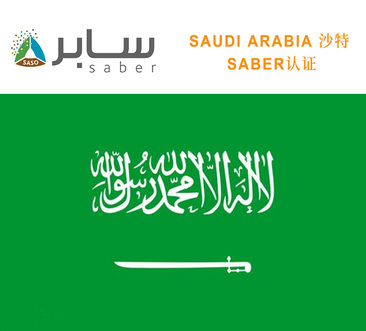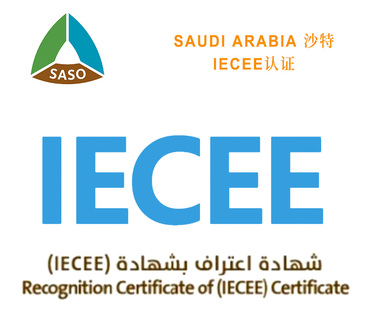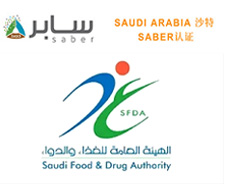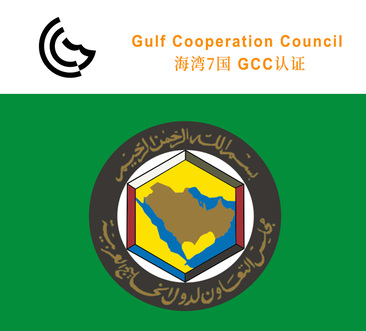News
-
MORE
202403-06
CE certification fees and related expenses for electric mosquito coils 1Usually, when it comes to the CE certification of electric mosquito repellent liquid, companies pay attention to the cost. How much does the CE certification cost? The cost of CE certification is about 2-3k, and different quotations are provided for different products. The cost of medical machinery and equipment product certification is relatively high, and the specific quotation is provided by the official customer of Sage to answer any difficult questions one-on-one.Electric mosquito repellent liquid is mainly a chemical component of pyrethroids, and a small amount of chloroform, benzene, ether, etc. are also added as solvents. These chemical components can be absorbed through the respiratory and digestive tracts and have certain toxicity. If exposed to excessive amounts for a long time, there will be serious consequences. Some low-quality mosquito repellents contain drugs that are extremely harmful to human health, such as commonly used pesticides such as dichlorvos.Electric liquid mosquito repellent incense, like electric paper mosquito repellent incense, is composed of mosquito repellent liquid and an electric heater. When the electric heater is connected to the power supply, the PTCR element starts to heat up, and then relies on the temperature adjustment function of the PTCR element itself to maintain its temperature within a certain range. The above description can also help us understand this process. It is necessary to obtain CE certification for products exported to other countries in order to protect the environment and the health of consumers.
-
MORE
202403-06
Perform Bluetooth CE-RED certification process What are the processes required for Bluetooth CE-RED certification? RED certification is one of the mandatory CE certification modes for wireless products in EU countries. As long as the product has wireless transmission frequency, such as wireless speakers, wireless doorbells, headphones, Bluetooth devices, WIFI devices, alarm devices, wireless phones, and transmission equipment computers, they all need to apply for RED certification.What exactly is RED? Everyone knows CE, and RED is a directive in CE certification. Any wireless product entering the EU market must undergo RED certification, which is more complex than ordinary products. Ordinary CE only has two reports, LVD and EMC, while wireless device products have four reports for CE certification. The process of applying for RED varies depending on the product frequency band and classification. For low-frequency wireless products, we usually refer to frequencies such as 49MHz, 40MHz, 33MHz, 315MHz, 88-108MHz, 35MHz, etc. These frequencies are used differently in different countries. For wireless products, we usually encounter product applications such as FCC and REDBluetooth CE-RED certification process: The customer provides complete test samples and accessories, and submits them to our Sage company. The customer provides a complete technical material circuit diagram, BOM, product certificate, etc., and the document should be in English. The Sage laboratory will test the product and issue a report; Provide CE-RED certification reports for laboratory audit data. If you encounter any difficulties in obtaining CE-RED certification for wireless products, you can contact us for assistance. Our specialist will provide one-on-one service to you with over ten years of industry experience, providing you with more convenient and high-quality services.
-
MORE
202403-06
Iraq COC processing process and required materials The COC certification in Iraq is a certification for exporting controlled goods to Iraq. In October, Iraq issued new regulations to implement control over products that are needed, indicating that the import of goods is becoming increasingly strict. Generally, COC certification for exporting to other countries requires the issuance of certification by six authorized institutions in the country. Sample testing is conducted by the testing agency itself, with a validity period of one year. The application is first submitted, and a packing list is required to be submitted at the time of inspection. The inspection teacher checks the quantity, The goods are neatly arranged and passed in one go. If the inspector fails to meet the inspection requirements within 1 hour of arrival, the inspector has the right to refuse the inspection. If there is a need to charge travel and inspection fees in the next inspection arrangement, it will not be worth the loss. This fee is charged by the organization, not the inspection company. Whether the goods pass the COC certification in Iraq is determined by the inspection teacher.The main method of inspection is to verify the product, quantity, packaging, labeling, and whether there is a label made in China. The name of the goods must match the packing list, and there must be no defective products, rust stains, or attachments. The products must be clean and hygienic, and the goods must be opened and checked to prevent smuggling. During the inspection, the quantity of each model and product should be consistent with the application form and packing list, The final shipment quantity cannot exceed the inspection quantity. The inspector will verify the quantity of each model and product on site and record it in the inspection report. The final certificate will refer to the quantity and weight on the inspection report. After all goods pass the inspection, the packing list and formal invoice will be submitted. Two working days later, the Iraq COC certification will be issued. The processing period for Iraq COC certification is about 11 days, and it can be expedited.The application for COC certification in Iraq requires the following materials:1. Iraq COC Certification Application Form: The template for the application form will be provided by the testing company, mainly filling in the relevant information of the goods, product name, exporter, contact person, phone number, inspection address, HS code, etc. In the exported product name, the goods can be classified, for example, if they are in the same category, additional fees will be charged if they are not in the same category.2. Packing list3. Formal invoice4. Testing report or product photos
-
MORE
202403-06
Iraq CoC/VoC certification control products Recently, with the implementation of COC policies by Kurds in northern Iraq, there have been many inquiries about COC/VOC in Iraq. I would like to share with you the following common questions: Iraq COC and Iraq VOC both refer to the "conformity assessment certificate" of products, which is used for customs clearance of destination port importers and is a mandatory certification designated by the government. Compliance verification COC and VOC refer to the same certificate, but their names are different. The full English name of COC is Certificate of Conformity, which meets the import standards of IraqWhat products need to be COC exported to Iraq? The products that require COC mainly include the following categories: toys; Electronic devices; Cars, tires, and components; Construction products; Cosmetics and personal hygiene products; Kitchenware; Daily hardware; Chemicals; Textiles and footwear, etc.If it is verified that the product belongs to the non regulatory scope, it is not mandatory to apply for a CoC certificate. To apply for inspection, only the inspection report, invoice, and other declaration materials of the controlled product need to be provided. When packaging products, please separate controlled and uncontrolled products for smooth inspection.What is the validity period of the CoC certificate? CoC is a batch certificate that is only valid for the current batch of goods. The validity period of the inspection report is two months. If it exceeds two months, a re examination will be arranged.What if there are no relevant testing standards in the laboratory for products under the control of Iraqi Kurds? Please provide the English name of the product (preferably the English name on the invoice when applying), customs code, and product image for our confirmation. If the destination of the goods is Kurdistan, Iraq, and the customer insists on manufacturing COC, uncontrolled products can accept voluntary applications.
-
MORE
202403-06
Export Kuwait Certification Requirements and Required Materials Today, I would like to introduce Kuwait certification to you. As a small country in the Middle East, Kuwait can be said to be quite developed. Today, we will learn about Kuwait certification. In order to better protect the rights and interests of local people, the petroleum products produced here must undergo some certification so that they can be sold in the market. The most commonly used currently are two types of certification, the first being official agency certification, and the second being provided by suppliers. What is the difference between these two types of certifications, as they require documents and information provided by the company? Official agency certification requires the provision of documents and information (specific details can be consulted). SDO STANDARDS OF COMMERCIAL COMPANIES require the company to provide product names, product models, product quantities, etc., just like official agency certifications, they all require the company to provide documents and information. SDO STANDARD OF CERTIFICATE is a certification provided by the supplier.This type of product has the following characteristics:1. The product has been tested by official institutions;2. The product has a clear test report;3. The product must be packaged and labeled;4. Only after passing the test can it be sold in the market.During customs clearance in Kuwait, it is necessary to provide:1. Product application form2. Product manual3. Product photos4. Technical parameters and indicators5. Products exported to Kuwait must obtain a CE certificate6. The above certifications are mandatory requirements.
-
MORE
202403-06
Materials for COC certification application in Kuwait Mandatory products exported to Kuwait must provide a technical inspection report. For each batch of goods exported to Kuwait, a COC customs clearance permit document must be submitted. If the quantity of products in the control catalog is large and the shipment is frequent, it is recommended to apply for a COC certificate in advance. To apply for COC, the following information needs to be prepared: Product testing report: This report needs to be issued by a qualified third-party testing agency. If there is a valid testing report, separate testing is not required. Fill in the application form with product, images, and technical parameters: The blank application form is provided by the processing agency, and the above information can be submitted to the official designated agency.To apply for COC certification in Kuwait, you need to prepare the following information:1. Packing list2. Formal invoice3. Product testing report: issued by a qualified third-party testing agency. If there is a valid test report, there is no need for separate testing4. COC application form: The blank application form is provided by the processing agency, and in addition to the above information, cargo inspection should also be arranged. The following are Kuwait's inspection requirements: products, inner packaging, and outer packaging must have a "Made in China" origin label. Meanwhile, "Made in China" must be engraved and indelible;, Do not accept stickers.Each product and packaging must have:1. The product manual must have an Arabic manual2. Mandatory frequency requirement: 50Hz; Applicable voltage: 230V, 240V3. Special requirements for plugs and sockets: They must be British triangular plugs and sockets4. Electronic and electrical products need to display voltage and frequency on the product label
-
MORE
202403-06
How to apply for Saudi SABER certification and certification techniques for household appliances How to apply for SABER certification in Saudi Arabia for household appliances? When I looked at this question, I felt that it was too broad because there were too many household appliances. Different household appliances have different certification requirements, especially Saudi Arabia has 7 mandatory certifications, all aimed at different products. Accidentally, there will be new certification requirements. So when doing SABER certification for household appliances, it is important to know what product it is because the scope of household appliances is too broad. SABER certification for household appliances, SABER certification for small appliances, and SABER certification for electronic appliances can all be considered as SABER certification for household appliances. To our knowledge, there are three different certification requirements for the regulatory categories of household appliances. For example, refrigerators, freezers, air conditioners, washing machines, disinfection cabinets, and dryers all require energy efficiency certification, and many household appliances also require GCC certification before undergoing SABER certification.If we do this, it will cost 70000 to 80000 yuan. To be honest, few companies can afford it. Unless it is a large enterprise, it is possible to invest in advance. Otherwise, it's really not cost-effective. For example, some foreign trade companies require him to do energy efficiency certification and GCC certification, which may be difficult to earn back the cost. The investment is too high because doing GCC certification and energy efficiency certification requires so much money, both are the same model. If there are many models, it would be troublesome because different shapes, powers, and main components cannot be included in a testing report. Therefore, applying for a GCC certificate or energy efficiency certificate cannot help you understand. Making a certificate for one model will not exceed one model, and the certificate fee will not exceed one.Once the household appliances are confirmed, you can apply for the next step. For example, if it is a refrigerator air conditioner, it must first pass the energy efficiency certification before applying for SABER certification. If it is a soybean milk machine or a small household appliance, GCC certification is required. Only by obtaining the GCC certificate can one apply for SABER certification. Whether it is household appliances, small appliances, or electronic appliances, SABER certification requires a testing report to be prepared first. If it is a GCC product, when applying for SABER certification after obtaining the GCC certificate, the testing report certified by GCC can be used, as GCC certification requires a CB testing report. After receiving GCC, we usually have CB testing reports on hand. At this point, we can utilize this CB testing report by applying for SABER certification, which saves over 10000 yuan. This is also money. In fact, whether it is SABER certification for household appliances, small appliances, or electronic products, the process of applying for SABER is not complicated, provided that there are relevant certifications, such as energy efficiency and GCC certification. This depends on the specific product. Most household appliances require GCC certification. As for energy efficiency certification, it does not include all household appliances, only refrigerators, freezers, air conditioners, washing machines, disinfection cabinets, and dryers. As for whether there will be additional products in the future, it depends on the official requirements of Saudi Arabia.
-
MORE
202403-06
Certification for household appliances: Tanzania COC/PVOC It's almost summer now, and it's almost the season of hot selling household appliances. Fans, air conditioners, refrigerators, air conditioning fans, and so on are all hot selling products in summer, and COC/PVOC requires mandatory certification for electronic and electrical products. Most of them are formulated according to the standards of the International Electrotechnical Association. Tanzania COC needs to apply for COC certification before shipment, otherwise it cannot be cleared at the destination port. Only after passing the audit can the shipment be cleared and the COC certificate be obtained.Tanzania COC/PVOC certification process:1. Tanzania PVOC can apply for exemption from inspection of goods2. Fill out the application form3. Send the samples to the Suo Ge laboratory for testingAfter the sample is qualified, Sage and the exporter will coordinate and arrange for inspection. A dedicated person should be present to assist in the inspection, otherwise the quality inspector will not know the name and location of the goods5. The main task is to visually inspect whether the outer packaging labels meet the standards, as well as whether the relevant sample sampling work meets the standards6. Finally, provide the packing list, stamp the invoice, and issue a COC/PVOC certificateWhy do I need to apply for a COC/PVOC certificate1. Mainly to obtain local laws and regulations for the product.2. Prevent counterfeit and inferior goods, 3. No products pass through Tanzanian customs3. Improve the market competitiveness of the product4. Protect the domestic people and environment from pollution
-
MORE
202403-06
The CE certification standard process for different electronic products. CE certification refers to a certification mark that complies with European CE standards and can be freely circulated in Europe. Electronics sold in the European marketObtaining CE certification for products is an obligation and necessary. However, different electronic products undergo the process of obtaining CE certification and EN standardsThe requirements may vary. This article will briefly introduce the process of CE certification and list some common electronic productsEN standard requirements.The CE certification process includes: application, testing/evaluation, certificate issuance, and annual review. The application stage is necessary to submit to the certification bodyThe files and information, including technical documents, product manuals, and related test reports. The testing/evaluation phase is carried out by certification bodiesConduct product testing and evaluation to verify compliance with EN standards. The testing and evaluation projects may vary depending on the productThere are differences, but generally include tests on electromagnetic compatibility and safety. The certificate issuance stage is based on the certification body'sThe results of testing and evaluation are issued with a CE certification certificate, proving that the product meets the requirements of the EN standard. Annual audit is a certification bodyRegularly inspect and audit products that have obtained CE certification to ensure they continue to meet the requirements of EN standards.Different electronic products have different processes and EN standard requirements for obtaining CE certification. Here are some common electronic productsExample of EN standard requirements:1. Electronic equipment: The EN 55032 standard requires that the electromagnetic radiation of electronic equipment should not exceed a certain limit to ensure that it will not affectInterference from surrounding equipment and environment.2. Power adapter: The EN 60950 standard requires that the power adapter should have sufficient power under normal use and fault conditionsSafety to prevent hazards such as electric shock and fire.3. Communication equipment: The EN 301489 standard requires communication equipment to not cause damage to other devices when receiving and transmitting wireless signalsInterference, and there must be a certain level of anti-interference ability during use.4. Household appliances: The EN 60335 standard requires that household appliances should have sufficient safety in both normal use and fault conditions,To prevent hazards such as electric shock, short circuit, and overheating.5. Medical equipment: The EN 60601 standard requires medical equipment to have sufficient safety in both normal use and failure states,To protect the health and safety of patients and healthcare workers.
-
MORE
202403-06
The CE certification standards and process steps for European regulations. With the rapid development of the global economy and the continuous growth of international trade, the European market has become an indispensable factor for many enterprisesOpportunities. However, entering the European market and selling products there is not an easy task. The European Union has developed a series of regulations and standards,To ensure consumer safety and product quality. CE certification has become a necessary condition for the European market. In this article, we will delve deeper intoExplore the standard requirements and process steps for CE certification to help businesses better understand how to ensure product compliance with European regulations.Firstly, let's understand what CE certification is. CE certification (short for Conformit é Europe é ene) refers to productsComplies with regulatory requirements and standards in the European market. Through CE certification, manufacturers can sell their products to the European market,And ensure that its products meet European requirements, effectively reducing market access barriers.The standard requirements and process steps for CE certification are as follows:1. Determine applicable directives: The European Union has developed many directives related to different types of products. Manufacturers first need to determine the suitabilityApplicable directives for its products and understanding of relevant standards and regulations.2. Conduct product evaluation: According to applicable directives, manufacturers are required to conduct product evaluation. This can be achieved through self authentication or delegated authenticationInstitutions conduct evaluations to complete. The purpose of evaluation is to ensure that the product complies with relevant standards and regulations, and meets consumer safety requirements.3. Preparation of technical documents: Manufacturers need to prepare a detailed technical document to prove that their products comply with relevant standards and regulations.Technical documents should include product specifications, design drawings, test reports, and other relevant information.4. Conduct internal production control (IPQC): Manufacturers need to establish an internal production control (IPQC) system to ensure that products are in compliance withCompliance with relevant regulations during the production process. This includes aspects such as raw material procurement, production process management, quality control, etc.5. Conduct risk assessment: Manufacturers need to conduct a product risk assessment to determine potential risks that may exist during normal use of the productTake corresponding measures to mitigate these risks.6. Conduct laboratory testing: Manufacturers need to send their products to accredited laboratories for testing to ensure they meet relevant standardsAnd regulations. The testing may involve electromagnetic compatibility, mechanical properties, chemical content, and other aspects.7. Preparation of declaration documents: Manufacturers are required to prepare a declaration document that meets CE certification requirements. The declaration document should include product informationManufacturer information, applicable directives, standards and regulations, etc.8. Marking with CE Mark: After all necessary steps and tests, manufacturers can mark their products with the CE mark. CE MarkIndicates that the product meets European requirements and has passed CE certification.Through the above process steps, CE certification ensures that products comply with relevant regulatory requirements before entering the European market. This helps toSafeguard consumer rights and improve product quality and safety. For enterprises, CE certification is also a way to enter the European marketThe threshold, through certification, can enhance consumer trust and recognition of the product.
-
MORE
202403-06
Market demand for electrical certification SASO in Middle Eastern countries. In recent years, the economies of Middle Eastern countries have developed rapidly, and international trade cooperation has continued to deepen. Meanwhile, electrical equipment in the Middle East regionThe market is also showing a trend of vigorous development. However, Middle Eastern countries have increasingly high requirements for the quality and safety of electrical equipment.Therefore, understanding the demand and related certification standards of the electrical equipment market in Middle Eastern countries is crucial for enterprises.In Middle Eastern countries, SASO certification is considered an entry standard for the electrical equipment market. SASO certificationIt refers to proving the compliance of products through testing and verification that complies with relevant quality and safety standards in the Middle East region. Only passedOnly SASO certified products can enter the Middle East market and be sold.Firstly, Middle Eastern countries have very strict quality requirements for electrical equipment. The climate conditions in Middle Eastern countries are relatively harsh,Environmental factors such as high temperature and humidity have high requirements for the stability and safety of electrical equipment. Therefore, Middle Eastern countriesThe electrical equipment market has high requirements for product quality, reliability, and durability. Only through rigorous testing andVerification is necessary to obtain SASO certification that meets the needs of the Middle East market.Secondly, SASO certification also covers the safety requirements of Middle Eastern countries for electrical equipment. Safety regulations for electrical equipment in Middle Eastern countriesVery strict, requiring products to comply with relevant safety standards, such as requirements for electric shock prevention, fire prevention, etc. In electrical equipmentEnsuring the safety of products in the market is a key concern for consumers in Middle Eastern countries. Therefore, SASO certification can prove thatThe product meets the safety standards of Middle Eastern countries, enhancing its competitiveness in the market and consumer trust.In addition, Middle Eastern countries have also put forward high requirements for energy consumption and environmental protection of electrical equipment. With the increasing global energy issuesProminent, Middle Eastern countries are also actively promoting the improvement of energy efficiency and the strengthening of environmental awareness. Therefore, SASO certification also includesConduct energy efficiency testing and environmental protection requirements for electrical equipment to ensure that products meet the requirements of Middle Eastern countries in terms of energy utilization and environmental protection.Therefore, for electrical equipment enterprises, it is important to actively understand and master the demand analysis of SASO certification in Middle Eastern countries.Only by meeting the requirements of Middle Eastern countries in terms of product quality, safety, energy efficiency, and environmental protection can we gain market recognitionAnd the favor of consumers. Through compliance certification, enterprises can further explore the Middle East market and achieve broader development space.
-
MORE
202403-06
Preparation of ROHS certified environmental directive compliance documents - Material requirements: ROHS certification refers to the testing of the material composition of electronic circuits or electronic electrical products to determine whether they comply with the European EnvironmentRequirements for Restriction of Hazardous Substances Directive. This certification is for the electronics industryIt provides important environmental standards and protects humanity and the earth from harmful substance pollution. To ensure ROHS certification,Manufacturers need to prepare a series of environmental compliance documents to prove that their products comply with relevant standards. This article will introduce ROHSCertification information requirements, and provide some suggestions and guidance on preparing these documents.The main requirements for ROHS certification materials include:1. Parts List (BOM): Provide a list of all components used in the product, including manufacturers, models, and quantitiesDetailed information. This list is very important because ROHS certification requires the prohibition of the use of specific harmful substances such as lead, mercury, and cadmiumFor each component, the manufacturer needs to confirm that it does not contain these prohibited substances, such as hexavalent chromium.2. Declaration of Raw Material Suppliers: Raw material suppliers related to each component are required to provide a declaration that complies with ROHS certification requirements. This statement should include proof that the raw materials do not contain restricted substances and be signed and confirmed by the supplier. Manufacturers need to collectThese statements ensure transparency in the supply chain to demonstrate product compliance.3. Material testing report: For key components or raw materials, the manufacturer needs to conduct material testing and provide a testing report. theseThe report should be provided by an accredited laboratory that meets relevant testing standards, demonstrating that the materials do not contain harmful substances and meet ROHS certification requirementsRequirements.4. Process flow documents: These documents provide a detailed description of the production process of the product, including the materials and processes used in each link.For each step, the manufacturer needs to check whether restricted substances have been used and provide corresponding proof documents. These files willAssist ROHS certification bodies in understanding the production process of products and evaluating their compliance.In addition to the above mentioned content, manufacturers also need to ensure the accuracy and completeness of ROHS certification materials, and ensure their traceability.When preparing these documents, the following suggestions and guidance can help manufacturers improve work efficiency and accuracy:1. Advance planning and preparation: The preparation of ROHS certification materials requires a certain amount of time and effort, therefore, manufacturers shouldPlan and arrange relevant work in advance. Clarify the responsible person and schedule, and ensure sufficient resources are used for data collection and organization.2. Close cooperation with suppliers: Suppliers are one of the important sources of ROHS certification materials, and manufacturers should establish good cooperation with themRelationship. Communicate with suppliers to ensure they understand the requirements of ROHS certification and actively cooperate in providing relevant statements and supporting documents.3. Ensure the accuracy of data: When collecting and organizing relevant documents, manufacturers need to ensure the accuracy and completeness of data.For each component and raw material, it is necessary to carefully verify the substances contained and fill in the correct model and quantity information.4. Establish a reasonable document management system: In order to ensure the traceability and easy retrieval of ROHS certification materials, manufacturers need to establishA reasonable document management system. Classify and number different files, and keep them properly for future queries and updates.
HOT services
RELATED NEWS
-
+ Market demand for electrical certification SASO in Middle Eastern countries.
2024-03-06
-
+ The CE certification standards and process steps for European regulations.
2024-03-06
-
+ Application Guidelines for SASO Saudi Arabian Certification
2024-03-06
-
+ Preparation of ROHS certified environmental directive compliance documents - Material requirements:
2024-03-06
-
+ The EU General Product Safety Regulations have officially come into effect
2024-03-06
-
+ Recent significant regulatory updates from TEC and BIS in India
2024-03-06
-
 Tel
TelHotline
+86 400-826-3320
-
 WhatsApp
WhatsAppWhatsApp
+86-15355373320-penny
+86-13362995501-laura
-
Skype
-
 E-mail
E-mail -














